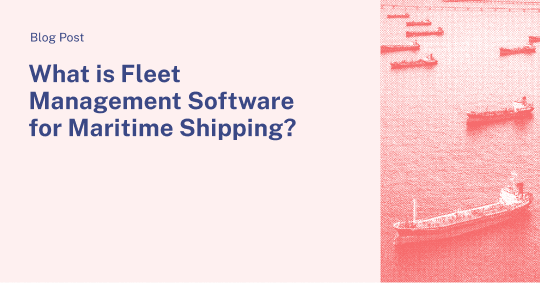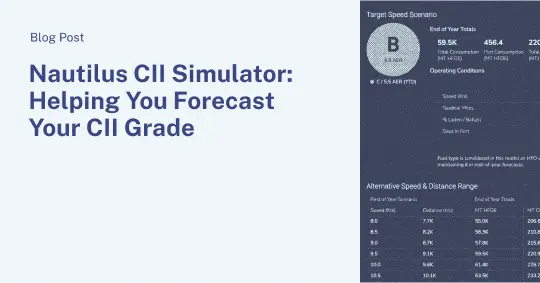Shipping is the backbone of global trade, transporting $14 Trillion worth of goods every year, consuming $150 Billion of fuel. Yet, ocean commerce burns the dirtiest fuel and is a large contributor of greenhouse gas emissions. Various regulatory bodies, such as IMO or the EU, have announced and (partially) implemented regulations to cut down emissions, and we’ve seen non-binding regulations being adopted by owners, financiers, and charterers. The amount of regulations is massive and can be confusing. But they all follow the same principle: The path to carbon-neutral shipping. This blog post aims to help clarify different regulations and their impact on owners and charterers.
Regulators
Due to the global nature and complexity of operations, emission regulation in the shipping industry is the responsibility of a specialized agency of the United Nations, the International Maritime Organization (IMO). The IMO’s senior technical body on marine pollution, the Marine Environment Protection Committee (MEPC), has adopted 21 environment-related regulations for the IMO. The original focus of environmental work was stopping pollution caused by fuel oil, leading to the creation of the first ever anti-pollution convention, the International Convention for the Prevention of Pollution from Ships (MARPOL) in 1973. Since then, MARPOL has expanded to cover all forms of marine pollution including pollution from chemicals, harmful substances, garbage, sewage, and under the 1997 Annex VI air pollution and emissions from ships. The regulations from Annex VI minimize airborne emissions from ships including SOx, NOx, ODS, CO2, and VOC shipboard incineration and their contribution to local environmental problems.
In addition to the IMO, other regulatory bodies and alliances have begun to push for the decarbonization of the shipping industry. In 2013, the EU set a strategy towards reducing GHG emissions in line with the goals in the Paris Agreement from any vessels arriving or departing from a Member state (EUMRV). Industry alliances including the Getting to Zero Coalition, the Poseidon Principles, and the Sea Cargo Charter have also formed to incentivize the industry’s push for lower emissions.
Current IMO Regulatory Requirements
According to the 2020 IMO Greenhouse Gas (GHG) study, International shipping accounted for 2.9% of the global total anthropogenic CO2 emissions, emitting 1,056 million tonnes of the gas. In order to curb this, the IMO has developed a strategy to reduce GHG emissions from ships by at least 50% using 2008 as a base year. To accomplish this ambitious task, the IMO implemented short term (2018 – 2023), medium term (2023 – 2030), and long term (after 2030) goals. Current regulation implemented by the IMO include the following:
Energy Efficiency Design Index (EEDI)
The EEDI establishes a minimum energy efficiency level per capacity mile for ships based on their size and type. EEDI is calculated through a formula based on the technical design parameter for a given vessel and is expressed in grams of CO2 per capacity mile. The regulation establishes a CO2 reduction level of 10% for phase 1 that is set to be tightened every 5 years until the period 2025 and on where there is a mandated 30% reduction from the reference. The reference value is calculated from the average efficiency for ships built between 2000 and 2010.
Ship Energy Efficiency Management Plan (SEEMP)
The SEEMP is meant to drive down emissions through efficient ship operations and is mandatory for all vessels over 400 GT. Shipping companies are encouraged, but not required, to manage ship and fleet efficiency over time through performance measures such as the Energy Efficiency Operational Indicator (EEOI). EEOI is the total carbon emissions in a given time period per unit of transport work. EEOI can be improved by increasing the technical efficiency of the ship, changing the amount of cargo transported per unit of time, or changes to speed. The SEEMP encourages the owner and operator to incorporate new technologies and practices throughout the life of the plan.
Fuel Oil Consumption Data Collection System (DCS)
Requires that ships of 5,000 GT or more record and report their fuel oil consumption and that the SEEMP will include a description of the method used. This data is aggregated and must be submitted annually to the flag state.
Current EU Requirements
The current EU strategy for reducing shipping emissions consists of three consecutive steps commonly referred to as EU MRV:
Monitoring: As of January 1, 2018, companies must monitor C02 emissions, fuel consumption, distance traveled, time at sea, and cargo carried on a per voyage basis. This information is gathered into an annual emissions report to be submitted to an accredited MRV verifier.
Reporting: As of 2019, companies must submit their monitoring reports through THETIS MRV (an XML template report submission terminal) to the Commission and the Flag State they are registered by April 30th. This report will then be inspected for verification and compliance.
Verification: By June 30 of each year, companies have to make sure that all of their ships that are visiting European ports have performed all necessary reporting. These ships must carry on board a document of compliance issued by THETIS MRV.
Upcoming IMO Requirements
In addition to the short-term regulations that the IMO has put into effect, they are also working to implement stricter medium term regulation as well as enhance existing regulations. During MEPC 75 in November 2020, the following requirements are expected to enter into force on January 1, 2023 pending their adoption at MEPC in June 2021.
The Energy Efficiency Existing Ship Index (EEXI)
EEXI will impose a requirement equivalent to EEDI Phase 2 or 3 to all existing ships regardless of year of build. The EEXI must be verified, and a new International Energy Efficiency Certificate (IEEC) must be obtained from the Recognized Organization no later than the first annual International Air Pollution Prevention (IAPP) survey on January 1, 2023.
Carbon Intensity Indicator (CII)
All cargo and cruise ships above 5,000 GT will have to calculate a mandatory CII. CII is based on a calculation of the annual efficiency ratio (AER) or EEOI. There is currently debate on what will be the mandated method to calculate CII. While the two are similar, they can vary greatly depending on the voyage and vessel type.
AER is the ratio of a vessel’s CO2 emissions per vessel capacity divided by the distance sailed. The AER uses parameters of fuel consumption, distance travelled, and design deadweight tonnage. AER is recognized as less accurate at estimating a vessel’s carbon intensity because ships often carry less than their maximum capacity. The Poseidon Principles use AER as their choice for CII metric.
EEOI takes into account the actual cargo onboard divided by the distance sailed. Different cargo will impact the outcome for EEOI and thus makes collaboration between charterers and owners very important for this metric.
Ships will be given an annual rating of A to E based on their CII with rating thresholds increasing towards 2030. Ships that receive a D rating in three consecutive years or an E rating in any one year will have to implement corrective action as a part of the SEEMP and have it approved.
Enhanced SEEMP
A ship’s SEEMP will now have to include mandatory content such as an implementation plan on how to achieve CII targets. The SEEMP will also now be subject to audits.
Upcoming EU Requirements
In September 2020, the EU voted in favor of a draft amendment to the EU MRV to include shipping in the EU Emissions Trading System (ETS). The amendment applies to all vessels over 5,000 GT and was created with the goal of reducing all emission per transport work on average across all vessels by at least 40% by 2030. This amendment still needs approval from the EU Council.
EU ETS
The EU ETS is the world’s first carbon market and works on a cap and trade principle. A cap is set on the total amount of greenhouse gases that can be emitted and that cap is gradually reduced over time. Within the cap, installation can buy or receive emissions allowances which can be traded as needed. After each year members must surrender enough allowances to fully cover its emissions. If an installation reduces its emissions, it can keep spare allowances to cover future needs or sell them to another installation.
At Nautilus, we use high frequency sensor data and build proprietary vessel-specific machine learning-based performance models to provide insights into historical, real-time, and predictive fuel consumption and emissions, enabling our clients to stay ahead of the market and reduce their carbon footprint.


